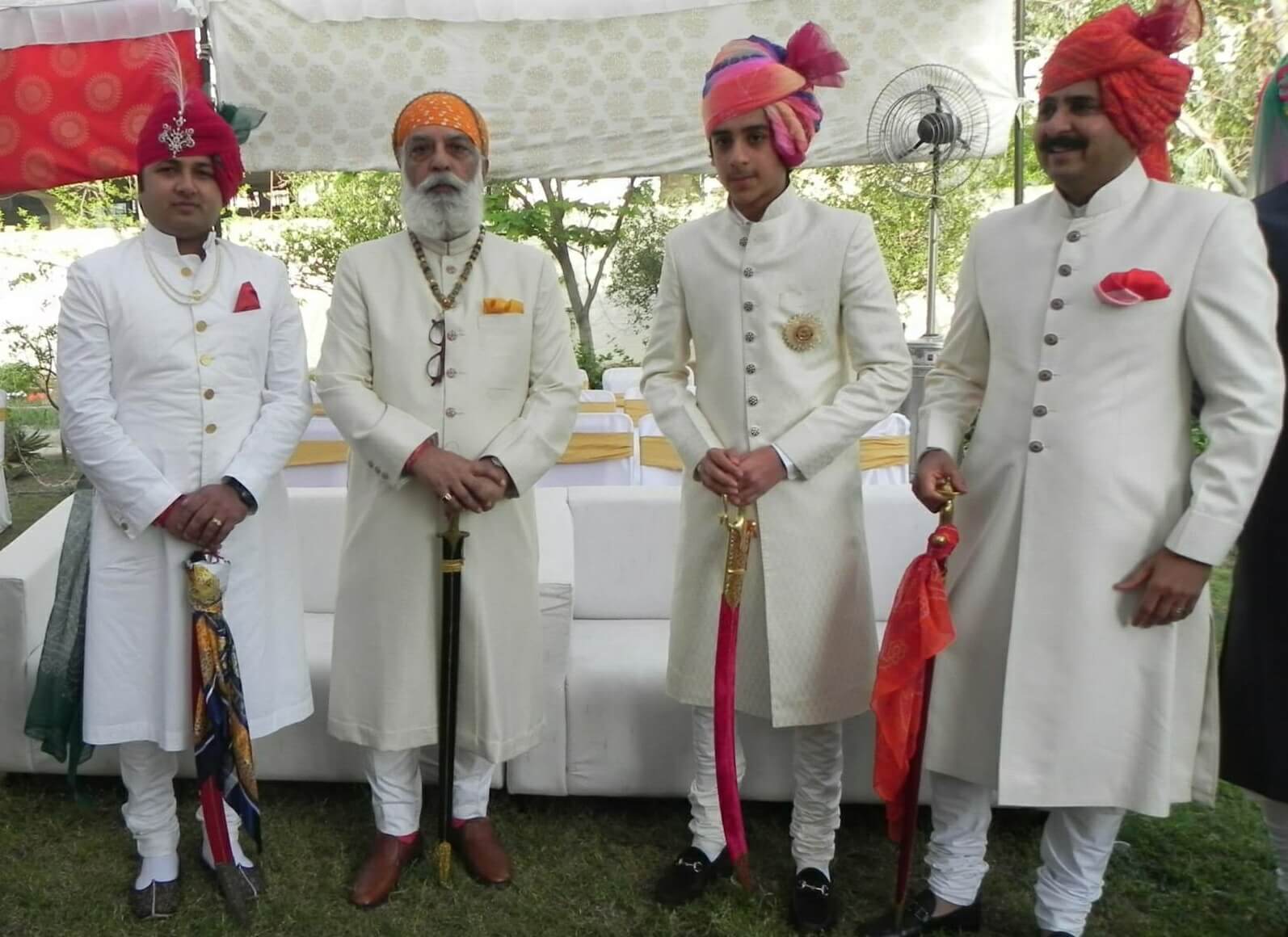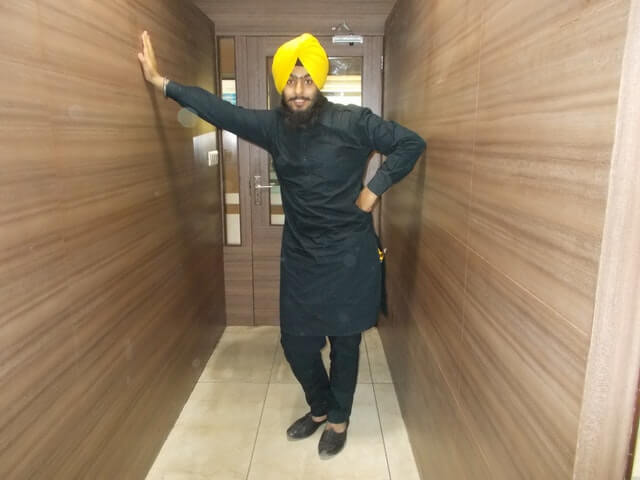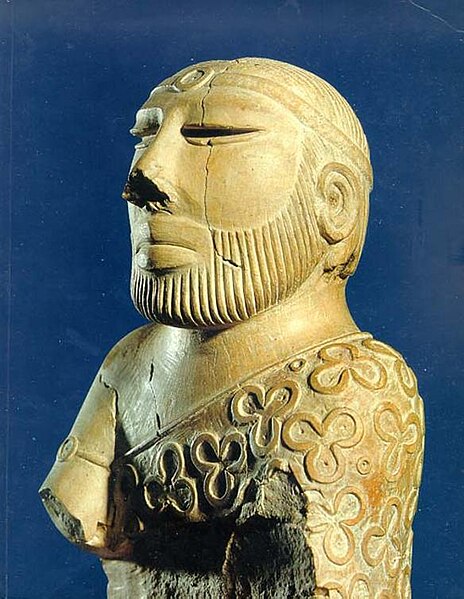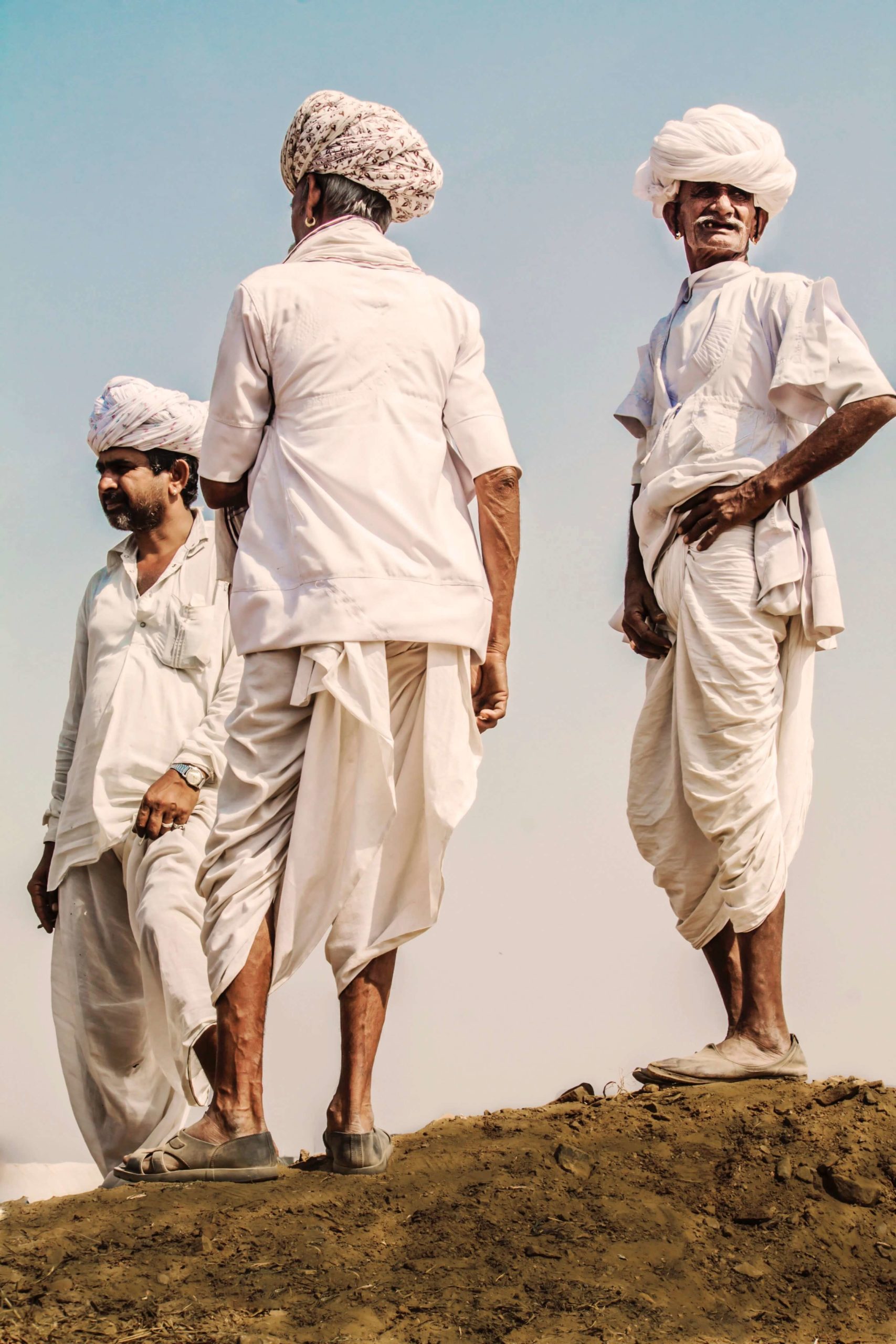
This post includes affiliate links
Did you ever thought how we ended up wearing clothes, when did we start wearing clothes?
According to anthropologists, humans started wearing clothes somewhere between 100,000 and 500,000 years ago. Anthropologist suggests the Neanderthals were the first people to have introduced clothes.
The first clothes were made from animal skins, furs, shells and leaves etc. Later in history, it was found that small animal bones were used to sew leather and fur garments. Humans had to invent weaving, spinning and other techniques to make fabrics which are used till today.
Ultimate guide to traditional Indian men’s clothing
If you search for traditional Indian mens clothing, say for example marriage party or cultural festival. You will get a result list of traditional Indian mens wear.
India is a vast, culturally diverse country. The clothing is influenced by race, climate, region etc. This guide will help you choose the perfect traditional Indian mens clothing for all the events with an Indian connection.

History of clothing in the Indian subcontinent
Evidence of clothes was found in the excavation of Indus alley civilization. Clothing made from locally grown cotton was found in evidence. India was one of the first places were cotton was grown to make cotton fabrics.
Rock- cut sculptures, cave paintings and human art forms in temples and monuments suggests the use of clothes in early Indus valley civilization.
World famous sculptures like the statue of “Priest king wearing a printed” robe is from Indus valley civilization.
During the Vedic period, clothing involved a single piece of cloth wrapped around the whole body and draped over the shoulder.

This was the general cloth for both the sexes; the difference was only the size and the manner of wearing. Slowly clothes for inner, outer and chest cover were made. In the later part of the Vedic period, garments were made as inner cover, outer cover and chest cover.
Archaeological evidence suggests Indian classical clothing such as dhoti and half stitched shirts like kurta existed during the pre- Mauryan era. Evidence of Stitched clothing can be found in the reign of Mauryan dynasty.
The lifestyle and architecture of ancient Indians can be seen in sculptures in various places. It also gives us evidence of dressing styles and fashion trends.
During the Gupta period, stitched garment became a sign of royalty. Evidence of Indian clothing can be found in temple painting and sculptures. Ancient Indians wearing kurta and salwar were depicted in post Gupta period sculpture.
The Mughal period had evidence of luxury clothing. Clothing fibers like muslin, silks, velvet and brocades were used extensively for Mughal royal dresses.

The Rajputs introduced sherwani as an upper garment and salwar as lower garments. Dhoti became traditional attire during that time.
British rule had drastic impact on the dressing sense of Indians; Indian clothing began to show European influence. The fusion of British frock coat and achkan were a sign of respect. The upper class Indians were the first to get influenced by the western clothing.
Foreign Influence on Indian Clothing
Whenever there is contact between two cultures, the fusion gives birth to another culture. Contacts with other cultures and communities had a tremendous influence on the lifestyle and clothing of Indians.
Indians had contact with other cultures in the ancient and classical periods. Great travellers and voyagers traveled across India and wrote about the rich culture of India.

Ancient descriptions of Indian culture can be found in different books and journals written by traders and travellers. The spice trade in Kerala was famous all over the word.
There are written records as early as 562 BCE of interaction of cultures through the silk route. Many Chinese monks and travellers have written detailed accounts of Indian political and social aspects.
The influence of foreign cultures started in the late medieval period and early modern period. The repeated invasions of central Asian nomadic clans, followed by the rule of the Delhi sultanate and the British raj had a deep impact on the political and social aspects of Indian sub-continent.

The Muslims brought clothing fibers like muslins, silks, velvets and brocades. They introduced trousers with long tunics known as salwar kameez. Women wore churidars with long veils or scarfs. The lehenga is another dress introduced during the Mughal period.
The British brought their clothing and fashion statement with their cultural values. The upper class Indian were the first to accept the shirt -trouser clothing. The sherwani evolved to British coat and achkan. During the colonial period Indian clothing had many changes.
Traditional clothing in Different regions of India
Traditional Indian clothing varies from region to region. There are changes in fabrics, style and application. Climate, ethnicity, geography and culture influence clothing choice of that particular region.
India as country is a union of many states. Broadly, it is divided into north, south, east and west. The particular region shares common climate and cultures.

Though, it is different for different states, it shares common social and cultural foundation.Traditional Indian clothes too are influence by climate, geography and culture. Take an example of humidity playing an important role in choosing fabrics of cloths.
Ethnic clothing of a particular region is different from the other. The diversity of cultures in India can be seen through the lens of ethnic clothing.
List of traditional Indian mens clothing
We have divided the list into categories, so that it will help you choose from all the different clothing like the upper garment, lower garment and traditional head wear.
Traditional Upper Clothing of Indian Men
Sherwani
Sherwani is a coat like garment worn in traditional ceremonies in India and other parts of Indian sub-continent. It is worn over a kurta with the combination of either shalwar, pyjama, dhoti or churidar as the lower body clothing.
It is similar to western frock or the Polish zupan. It is distinct from Achkan, another long jacket worn by men from India. Various aspects of the garments are different like the front opening.
The sherwani has a frontal opening because it is usually used as an over coat. The Achkan has side opening which is tied by a string. The sherwani is longer in length as compared to achkan. And, it is made from heaver fabrics.
Sherwani is generally associated with royalty and aristocracy, but with the acceptance of general population it is used as an occasional traditional mens wear.
The Sherwani is worn in north- western parts of India with the churidar as the lower garment. The modern sherwani have detailed embroidery or patterns.
World famous Music director A R Rahman appeared in black sherwani to receive two Academy awards in 2009.
Kurta
The kurta is one of the most sought after traditional menswear in all over India. It is a loose fitting shirt worn by both men and women.
It has evolved through centuries as a comfortable piece of clothing for traditional occasions as well as for daily use.
Traditionally, kurta is made from cotton or silk.
It is designed as a loose fitting garment. Plain kurtas are preferred for its daily use. Embroidered or patterned kurtas are made for traditional or cultural occasions.
It is worn with payjamas, shalwars, churiders and with popular jeans lately. There are variations of kurtas that can be found in India. With time they have evolved with local tradition.
Regional styles include Hyderabadi, Lucknowi, Bhopali and straight cut kurtas. It is worn by both men and women for its versatility and comfortability. It can be seen in every festivals and cultural occasions.
Achkan
Achkan just Like the Sherwani is a long knee length jacket worn by men in India. It is also known as Baghal Bandi. Achkan have their origin from the Angarkha, an ancient clothing garment.
Achkan is a variation of Angarkha. Achkan is known regionally by various names such as Daura in North-East part of India, Chola in Northern part of India and Angi in southern region of India.
Achkan was worn by nobles and royals as court dresses. Now, Achkan is worn by grooms in wedding ceremonies and it is also worn as ethnic traditional menswear in formal festive occasions.
Many confuse Achkan with the Sherwani. They have similarities, but one can see the difference between the two garments. The main difference lies in their fabric, length of garment and flare below the waist.
The Sherwani is longer and flare from the waist; it is also made from heavy fabric. The Achkan is compact and can be worn by men of any height. The Achkan is worn with either dhoti or churidar.
Bandhgala
Bandhgala suit or the Johdpuri suit is a formal jacket or suit worn in India. You can say it is a shorter version of sherwani or achkan.
The upper garment originated in Rajasthan state of India. It was popular during the British raj, usually worn by the royals. It became popular as formal or semi-formal clothing in India.
It has a western style to it, as it can be matched with a vest. Usually worn with trousers, it is famous among Indian men. Embroidered bandhgala with matching or contrasting trousers are a new trend.
It is a sought after traditional indian mens wear for occasions such as weddings and formal ceremonies.
Angarkha
Angarkha also pronounced as Angrakha is an ancient traditional mens wear from Indian subcontinent. It was a court outfit worn by nobles. The garment had its two ends overlaps which were tied to the shoulder.
Angarkha is derived from sanskrit word “angaraksaka” meaning protection of body. It is predecessor to other upper garments of India. The basic cut and frame remained the same, only the length and style varied in other outfits.

Angarkha can be both short and long coat. There are different styles of Angarkha like the Gujarati and Rajasthani angarkha. The Gujarati angarkha is popular during the festive sessions.
Other styles include Rajasthani bandia angarkha, Mirjai, Gujarati Kediyu, Punjabi Angarkha, Chambi, Kalidar, Sindhi angerkho etc. The angarkha is now worn only in festive occasions or cultural events.
Jama
Jama was a long coat that was popular in Mughal era. It was worn throughout Indian subcontinent. Its use declined with the end of the 19th century.
There were different styles in different parts of the region. Jamas flaring out below the waist is popular in the Kutch region of India. Chakman jama ended at around the knees.
They were tied with string on either side. The Jama can be seen in cultural events.

Pathani
Pathani suits are collared full sleeve upper garment. They are similar to kurtas, except that they are loose fitting upper clothing mostly worn in Indian sub-continent.
The pathani suits have curved and flared bottom, whereas the kurtas have straight fitting bottoms. They can have pockets, shoulder loops, cuffs and convertible collar as design.
Pathani suits are generally worn during festive occasions or formal gatherings. A full sleeved pathani paired with a salwar is a classic mens wear for Indian men. New designs have floral embroidery and classic patterns.
Nehru Jacket
Nehru Jacket also known as Nehru vest is a tailored sleeveless jacket with mandarin collar. It was made popular by the late prime minister of India, Pandit Jawaharlal Nehru.
It is a hip length tailored coat inspired from Achkan or Sherwani. The Nehru jacket is often made with khadi fabric. It is also known as sadri , waskat or bandi.
Traditionally it is worn over kurta by men. It is quite popular among the political class in India. It was marketed as Nehru jacket internationally in the 1960s.
It appeared in many James Bond movies. Its elegant style has made it a popular ethnic mens wear. It can be seen in festive occasions and cultural events.
Traditional Lower Clothing of Indian Men
Dhoti
Dhoti is one of the oldest Indian clothing. It is the traditional attire for most of the people in Indian subcontinent. It is a rectangular piece of cloth wrapped around the waist for covering below the waist area.
It is usually around 15 feet long. It is also known as panche, vesti mardini, chaadra, dhotar etc. in regional languages.
It is an evolved form of antriya, an ancient lower garment.
It was a long strip of cloth passed through the legs and tucked at the back of the waist. It loosely covered the legs. The word Dhoti is derived from the ancient Sanskrit word dhauti – meaning to cleanse.
The dhoti is one of the traditional menswear of Indian men. It is an ethnic wear for men in cultural programs like festivals and wedding ceremonies.
Lungi
Lungi is one of the easily visible garments in the Indian subcontinent. It is similar to the sarong that is used in Indonesia and other Asian countries.
It is loved by people from regions where heat and humidity are high. It is used all over India as traditional men’s wear and also as casual wear. It is mostly liked in areas with hot and humid climate.
There are two types of lungis that are worn in India. The opened ones which are not sewn into a tube shape, and the stitched one whose both ends are stitched together to give it a tube shape.
They are commonly woven in cotton. Silk lungis are generally used for ceremonial purposes like wedding.
Shalwar
Shalwar or Salwar is a loose fitting pajama typically wide at the waist but narrow at the bottom. They are held with a drawstring or elastic belt.
Traditionally they are worn by both men and women. It is popular in the Indian sub-continent. It is mostly paired with a long shirt or tunic known as Kameez.
The combination of garment is known as salwar kameez. In the northern region of India it is known as Punjabi salwar. It is used daily in some part of India.
Salwar are worn as an ethnic dress by most men in the northern part of India.
Churidar
Churidar is a tight fitting pajama worn by both men and women in the Indian sub-continent. Churidars are narrowed version of the Salwar pants.
It is mostly worn with a kurta by men in India. It is traditional attire in most of the social gatherings. Its use can be seen in wedding ceremonies and cultural events.
The churidars are different from salwars in its length and size. They are narrow and longer than the salwar. The excess length makes folds and makes it appear like bangles above the ankles.
The extra length makes it possible to bend and sit comfortably.
Pajamas
Who doesn’t know about the Pajamas, they are loose fitting lower garment used for lounging and sleeping. They originated in the Indian subcontinent.
The word comes from “pae jama” meaning leg clothing. Traditionally they are worn by both men and women. The loose fitting trousers are tied at the waist by a drawstring or cord.
They are traditionally worn with kurtas and kameez. The popularity of the pajamas outside the sub-continent can be attributed to the British colonist in India.
They were introduced as “Lounging attire “. Later, they became popular as sleeping attire in the western world.
Traditional head wear of Indian men
If you think traditional head gear of India is as vibrant as their clothing, than it is true. Traditional headdress are also known as pagri, pagadi or most commonly as turban.
In some traditions a pagri or headgear is a symbol of honour and respect. Just like the clothing garment; Climate, customs and tradition have shaped the head wear of Indian men.

If you visit different parts of India, you will see the influence of culture, ethnicity and climate on the choice of headwear.
We have listed some of the traditional headgear of Indian men.
A Sikh Dastar/Pagri
The dastar also known as pagri is worn by the Sikh community. It is used to cover the long un-cut hair. It is a symbol of faith, and it is an important part of the Sikh culture.
It is mandatory for all khalsas to wear the dastar. It is one of the articles of faith that represent honour, self-respect, spirituality and piety.
The Marathi Pheta
The pheta is the traditional Marathi turban or pagri worn in Maharashtra. It is usually worn in traditional festivals, wedding and cultural ceremonies.
It is also common to see men wearing pheta occasionally. In some parts of Maharashtra, it is also given as gifts to male dignitaries. The colour of the pheta can give a clue for what occasion it has been worn.
Mysuru/ Mysore Peta.
Mysuru Peta is the traditional Mysore turban. If you happen to visit Mysuru, you will see the traditional peta. It was originally worn by the royals of the Mysuru kingdom.
It was part of the royal dress. Made of silk and gold threaded lace, even the administrators of the kingdom wore the peta in durbars and religious festivals.
The head wear is most popular in Mysore and Kodagu districts of Karnataka. It is symbol of cultural heritage. In formal functions, a mysuru peta and shawl are awarded to distinguished guest.
Rajasthani Safa
The colourful turbans in Rajasthan are known as pagari or safa. Due to hot and dry climate of the desert, the traditional safa is worn by most of the people in Rajasthan.
The distinct design and pattern indicates the caste and region of the wearer. The colour of the safa has special importance.
The colour saffron is worn during wedding and it is also the colour of valor. During traditional occasions and festivals , the safas add colour and style to the harsh desert.
Taqiyah
The Taqiyah is a rounded skullcap worn by Muslim men in India. It is worn as a part of religious custom. Taqiyah is worn by Muslim men in religious festivals and weddings.
It is one of the most common head wear of Muslim men in India.
Gandhi Cap
The Gandhi cap is a side cap made popular by the great Indian leader- Mahatma Gandhi. It has pointed front and back with a wide band.
It is made from khadi. It was a tradition for political activist and politician to wear the Gandhi cap.
Birkhe/ Dhaka Topi/Nepali Topi
Birkhe or Neplali topi or the Dhaka topi is a popular brimless cap worn by Nepali men. If you happen to meet Nepali men, you will find the traditional head gear in their clothing accessories.
The Birkhe is an important symbol of Nepalese tradition. It is worn by men in Traditional festivals and other cultural occasions.

Himachali Cap/ Pahari Topi
Pahri topi or Himachali caps are one of the well-known head dresses of India. It is a product from the state of Himachal Pradesh.
It is one of the traditional attire of Himachalis. It is visible during cultural and religious occasions. People from Himachal Pradesh have a tradition of presenting phari topi to guest.
It is quiet visible in all over the places in India. It is a fashion trend among youths; you can see celebrities, models, politicians wearing the Himachali cap.
So here it is.
My ultimate guide to traditional clothing of Indian men.
The guide provides a basic list of traditional clothing that is required in marriages, engagement and other cultural occasions.
If you get a chance to be part of Indian cultural event, check out the list for helping you to choose the perfect Indian traditional mens clothing.
The rich cultural diversity of India can be seen and appreciated by wearing the traditional clothing of this beautiful country.
My friend who is visiting me from USA in the month of may had asked me to look for traditional indian mens clothing. This blog will surely improve a mens outfit. Thanks for writing this blog, It will help me to assist.